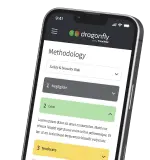In this insightful episode of Tech Toolkit by Scorchsoft, Andrew Ward delves into the critical decision-making process of selecting the right project management methodology for tech startups. He compares and contrasts the traditional Waterfall method with the flexible Agile approach, highlighting how each can impact the success of a tech project. Andrew discusses the linear, predictable nature of Waterfall, which may benefit projects with clear outcomes and minimal changes. Conversely, he explores Agile's iterative sprints and ticket system, which offer adaptability and responsiveness to evolving project needs and user feedback.
Listeners gain a deeper understanding of how these methodologies can align with their project's size, complexity, and potential for change, as well as how they might fit within the cultural dynamics of their organization. Andrew offers strategic advice on navigating budgetary constraints and the importance of choosing a methodology that not only serves the project's technical needs but also complements the startup's operational structure.
Throughout the episode, Andrew underscores the importance of being prepared for the market's dynamism, emphasizing that the right project management strategy can empower a startup to pivot efficiently and maintain a competitive edge. He reassures listeners that Scorchsoft is equipped to guide them through their tech project journey, whether they opt for Agile or Waterfall, ensuring their startup's vision is realized with precision and agility.
Key Topics Covered:
- Understanding Agile and Waterfall Methodologies
- Determining factors for choosing a project management method
- The benefits and limitations of Waterfall
- The adaptability and iterative nature of Agile
- The impact of user feedback on project management decisions
- Balancing budgetary constraints with project management styles
- The cultural considerations when selecting a methodology
- Strategic planning for Agile projects within budgetary frameworks
- The importance of aligning project management with organizational culture
Full Podcast Transcript
Your brilliant app idea deserves flawless execution. Discover whether Agile or Waterfall holds the key to transforming your vision into reality.
Hello, I'm Andrew Ward from Scorchsoft, and I’m here explore the Agile and Waterfall methodologies of project management. Today, we'll unravel the distinct differences between these two approaches and guide you through choosing the right method for your startup's success.
As you navigate the initial stages of your project, it's tempting to think that the essence of your endeavour lies solely in the concept you wish to develop. However, it's really important to recognise that the choice of project management methodology can profoundly influence the success of your endeavour. It's imperative, therefore, to make a judicious selection.
Your decision hinges on various factors: do you prioritise flexibility, or is a fixed cost at the outset paramount? Will your project be subject to numerous alterations as it evolves, or are the parameters expected to remain stable? Such considerations bring about significant trade-offs. This is the juncture where the merits of the Waterfall and Agile project management methodologies become particularly pertinent.
So, what is Waterfall? Think of it as a linear approach to project management. You define your project, execute the plans, and release the final product. It's straightforward and predictable, ideal for smaller projects with clear outcomes and a low likelihood of changes. Yet, for larger, more complex projects, Waterfall can be restrictive. It requires extensive upfront planning and leaves little room for adaptation as the project unfolds. If you're locked into a year-long project, six months down the line, your priorities might shift, but Waterfall's rigid structure could leave you high and dry.
Next, there is agile – the flexible, iterative counterpart to Waterfall. Agile allows for cyclical bursts of planning and development, known as Sprints. Each Sprint comes with a manageable chunk of work, allowing for adjustments and re-prioritization at regular intervals. This is ideal for complex projects, those with significant uncertainties, or when you are developing a product with a live user base that is constantly providing feedback.
With Agile, you work with 'tickets' – small, compartmentalized work requests that can be grouped, tracked, and estimated in terms of effort. They are dynamic and can evolve over time, unlike the static specifications of Waterfall. This makes Agile a more responsive and adaptive method, especially when your project's priorities are continuously shifting.
It’s clear that Agile supports change and encourages frequent reassessment of goals and tasks. It respects your evolving priorities and provides a framework to handle unexpected developments with ease. Agile's adaptability makes it a perfect fit for startups that need to pivot quickly and efficiently.
The capacity to swiftly and efficiently adapt your strategy is often pivotal to the success of your project. Typically, during the initial build phase, requirements tend to remain static, primarily because the application hasn't yet been exposed to users. However, once your project goes live and enters the hands of your customers, the landscape changes dramatically. At this stage, the clamour for modifications often intensifies unpredictably. It's nearly impossible to foresee the exact nature of these future adjustments. As your project evolves, it's essential to maintain a flexible stance, ready to recalibrate your priorities frequently. This adaptability is crucial, as user feedback will invariably shape and redefine your project's trajectory.
In short, Agile means you can respond to market changes, user feedback, and internal shifts without derailing your entire project. It empowers your team to work on what's most important now, not just what was planned months ago.
However, it's not a one-size-fits-all solution. There are scenarios where Waterfall might suit you better – particularly when your project is small, the scope is fixed, and there's high confidence that no changes will be needed.
While selecting between Waterfall and Agile methodologies is undoubtedly pivotal for project success, it's equally important to consider the cultural dynamics of your organisation. For instance, if your finance department adheres strictly to predefined budgets, the flexibility of Agile—where the specifics of what will be built under a monthly allowance are not determined until the work commences—might clash with such financial structures. In such scenarios, the structured approach of Waterfall could prove advantageous, mitigating the risk of adopting a project management style that's incompatible with your organisational culture and potentially leading to resistance and complications.
However, if you're inclined towards Agile but need to navigate budgetary constraints or forecasting requirements, consider a balanced approach. Engaging in high-level roadmap planning sessions could be a strategic compromise. This involves estimating the scale of features—opting for a broad overview rather than an exhaustive itemisation—allowing for a projection of your project's trajectory over the next three to nine months. For instance, you might restrict your estimates to development blocks ranging from days to a week, avoiding excessive granularity. This strategy furnishes a coherent vision of your intended direction and timeline, without the burden of overly detailed planning that can hinder agility and progress.
What I've shared with you today is a streamlined overview. The landscape of project management is nuanced, with diverse permutations within both the Waterfall and Agile frameworks. These methodologies are influenced by a myriad of factors that permeate deeply into the management of the project, shaping aspects as granular as team meeting protocols or the nuances of drafting requirements, whether through tickets or comprehensive technical specification documents. However, for the moment, it might be wise not to get entangled in these complexities. Instead, a pragmatic approach would be to determine your primary need: is it the adaptability that Agile offers, or the predictability of costs that Waterfall provides? This fundamental decision often serves as the cornerstone in choosing one methodology over the other.
So, as you consider your next project, think about its size, complexity, and the likelihood of change. Agile might require a shift in mindset, but it could also be the key to unlocking the agility your startup needs to thrive in a dynamic market.
Remember, Scorchsoft is here to guide you through every step of your tech project, whether you choose Agile or Waterfall. We understand the nuances of each and can help you decide which path will lead your startup to its greatest potential.
To learn more about how we can support your business with the right project management approach, visit scorchsoft.com or give us a call. Together, we'll build a strategy that aligns with your vision and paves the way for your success.
Thank you for tuning in to Tech Toolkit by Scorchsoft. Stay agile, stay informed, and keep innovating.








